That Cloudy Pasta Water is Liquid Gold—Here’s How to Actually Use It
For as long as I’ve been in professional kitchens, from tiny neighborhood spots to bustling restaurants, I’ve seen one thing that separates the rookies from the pros. It’s not fancy knife skills or a high-pressure attitude. It’s what they do with their pasta water.
In this article
Honestly, the fastest way to signal you’re new to the game is to dump a whole pot of pasta into a colander in the sink. That big cloud of steam that fogs up your glasses? That’s the ghost of a much, much better sauce you could have had. That cloudy, salty, starchy liquid is what we call “liquid gold,” and it’s no exaggeration. It’s a fundamental ingredient that elevates good home cooking to something truly special.
A lot of people are surprised by this. They just see dirty cooking water. But when you understand what’s actually in it, you see a powerful culinary tool. This isn’t about some trendy kitchen “hack”; it’s about a core technique that will fundamentally change your cooking for the better.
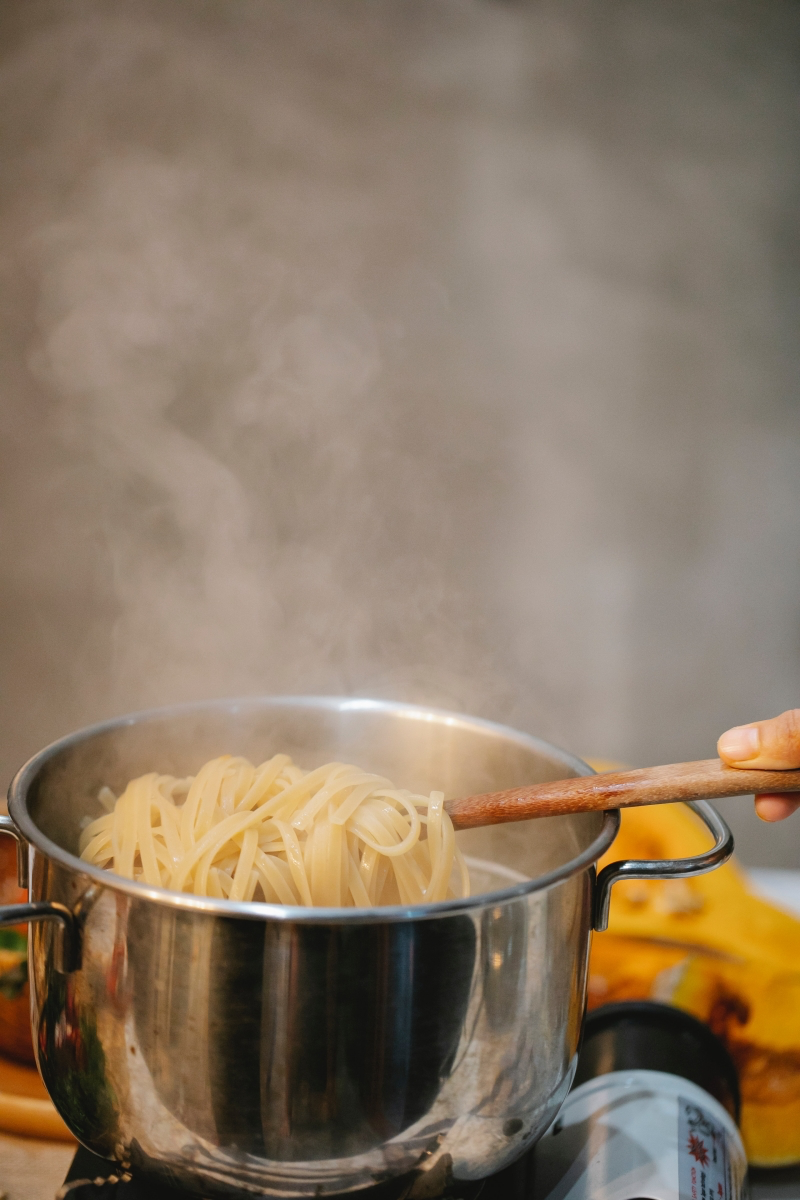
So, What’s the Big Deal? The Science Behind the Starch
Before you can use it, you gotta know what it is. As pasta boils, it releases starch—amylose and amylopectin, to be specific. This is what turns the water cloudy. That starchy water is now a natural emulsifier and thickener.
What’s an emulsifier? It’s a substance that helps two things that hate each other, like oil and water, mix together beautifully. The starch molecules grab onto tiny droplets of fat (from your olive oil, butter, or cheese) and suspend them evenly in the sauce. This is the secret to creating a silky, creamy texture without adding a drop of actual cream. It prevents the sauce from “breaking,” where you get that sad, greasy layer of oil pooling on top.
By the way, the type of pasta you use makes a difference. Look for packages that say “100% Durum Wheat Semolina.” Brands like De Cecco or even the standard Barilla work great and are available in pretty much any supermarket for $2 to $4 a box. Cheaper pastas sometimes get gummy or don’t release enough starch.
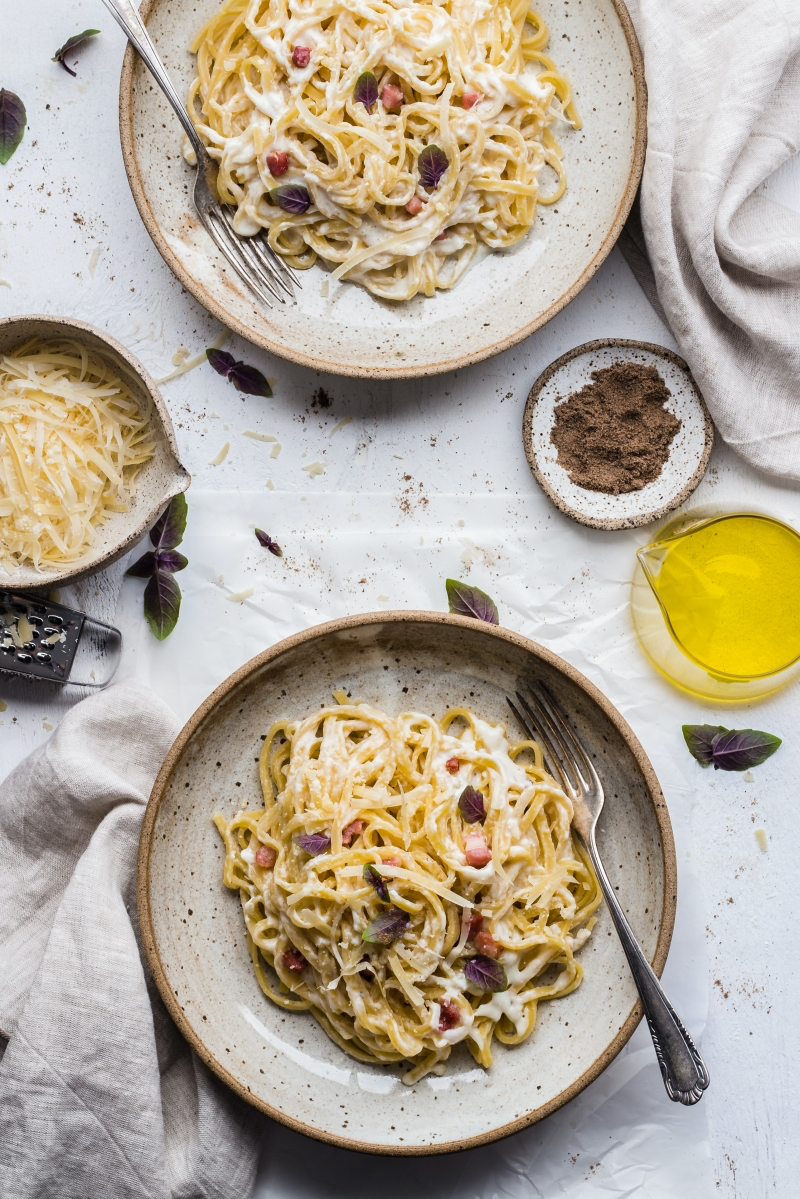
The amount of water is also key. A classic mistake is drowning a small amount of pasta in a gigantic pot of water. You want that water to be concentrated. A good rule of thumb is about 4 quarts (that’s 16 cups) of water for 1 pound of pasta. For a single serving of about 100g (3.5 oz), aim for 1.5 to 2 quarts of water. This creates a potent, starchy liquid that’s ready to work its magic.
Quick tip: For even MORE concentrated pasta water, try cooking your pasta in a wide, high-sided skillet instead of a deep pot. It uses less water, so the resulting liquid is incredibly starchy and effective. It’s a great little pro move.
Heads up on Gluten-Free Pasta: So many people are cooking with gluten-free options these days, and the question always comes up: does the water work the same? The answer is… mostly! GF pastas are often made from rice, corn, or lentils, and they absolutely release starch into the water. However, the texture can be a bit different. Rice starch, for example, can sometimes feel a little stickier. The principles are the same, but you might need to adjust the amount you use. My advice? Just try it. Reserve the water and see how it behaves in your sauce. It’s almost always better than using plain water.
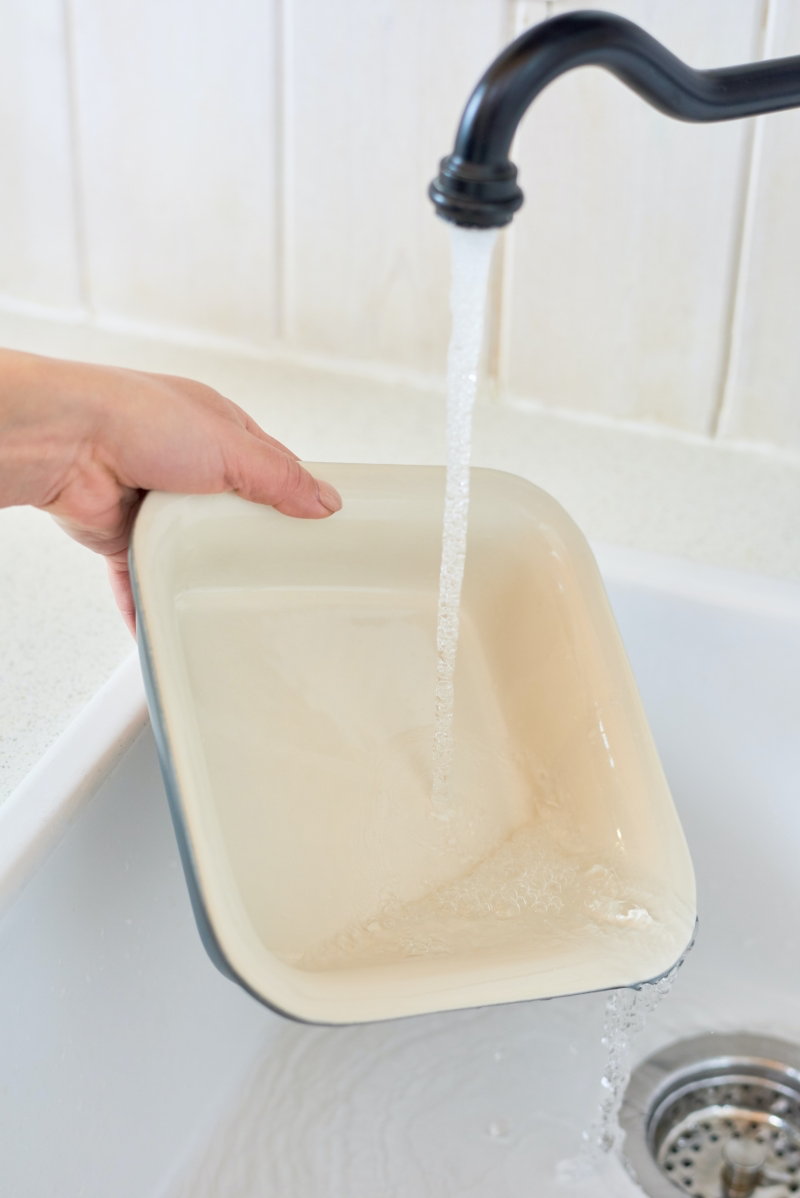
The Essential Technique: Making Unbelievably Velvety Sauces
This is the number one, most important use for pasta water. For dishes like Cacio e Pepe, Carbonara, or a simple Aglio e Olio, it is completely non-negotiable. It’s the difference between a clumpy, oily mess and a sauce that hugs every single noodle. Before you start, here’s your super simple shopping list:
- Pasta: Again, look for “100% Durum Semolina” on the label.
- Salt: Coarse sea salt or kosher salt is best. A big box is like $5 and will last you ages.
- A Tool for Scooping: A simple coffee mug or a heat-proof ladle is perfect.
The method is called mantecatura in Italian, which basically means “finishing” or “creaming.” It’s the final, crucial step.
- Salt the Water Correctly: It should taste like a mild seawater. Start with 1 to 1.5 tablespoons of coarse salt per 4 quarts of water. Good to know: If you only have fine table salt, use less! Fine salt is much saltier by volume. For 4 quarts of water, use about 2 to 2.5 teaspoons of fine salt (around 18-20 grams).
- Reserve the Water: About a minute before the pasta is done, scoop out at least 2 cups of the cooking water and set it aside. Don’t try to pour it out of the pot as you drain—you’ll just make a mess.
- Undercook the Pasta: Drain the pasta when it still has a noticeable bite. It’s going to finish cooking in the pan with the sauce. This is the step most people miss.
- Combine and Emulsify: Get your skillet back on the heat with your sauce base (like garlic and oil). Add the drained pasta directly to the pan. Now, add a splash—just about 1/4 cup—of the reserved pasta water.
- Get to Work: This is the mantecatura. Using tongs, vigorously toss, stir, and swirl the pasta in the pan. You’re physically forcing everything to combine. You’ll see it happen right before your eyes. Before, it was a watery, oily puddle at the bottom of the pan. After a minute of tossing, it transforms into a creamy, glossy coating. Add more splashes of pasta water as needed until it looks perfect.
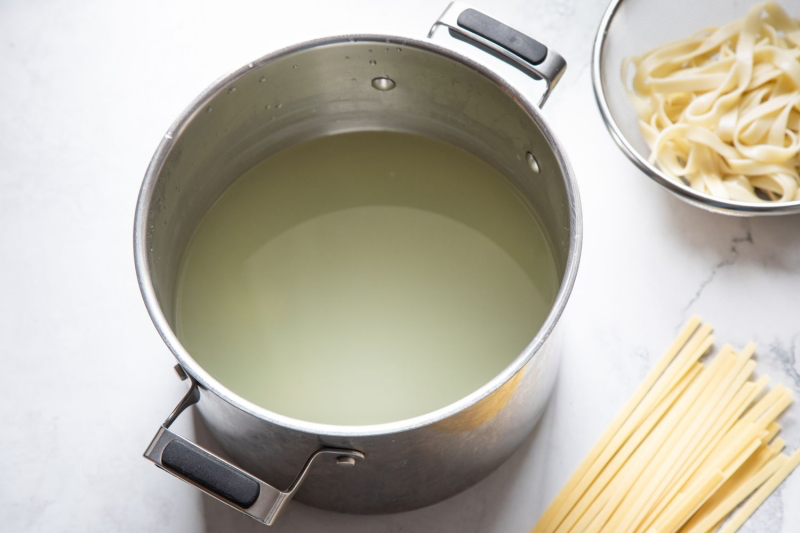
Troubleshooting From the Trenches
- My sauce is too thin! No worries. You either added too much water at once or just need more time. Keep tossing it over medium heat. As some water evaporates, the starch will concentrate and thicken things up.
- My sauce is clumpy or too thick. Easy fix. You just need another splash of pasta water. Add a little and keep tossing to loosen it.
- My cheese clumped into a rubbery ball! Ah, the classic Cacio e Pepe failure. This happens when the pan is too hot. The cheese seizes up instantly. The fix: Take the pan completely OFF the heat before you add the cheese. Add the cheese and a splash of pasta water, then stir like crazy to create the emulsion in a cooler environment. You can always put it back on low heat if you need to.
- My sauce is greasy and separated. The emulsion broke, likely because the pan got too hot or you stopped stirring. I once watched an apprentice break three batches of Carbonara during a busy service because his pan was screaming hot. We had to teach him to feel the temperature. You can sometimes save it by taking the pan off the heat, adding a small splash of pasta water, and whisking furiously.
Try This Tonight: A 15-Minute Aglio e Olio Challenge
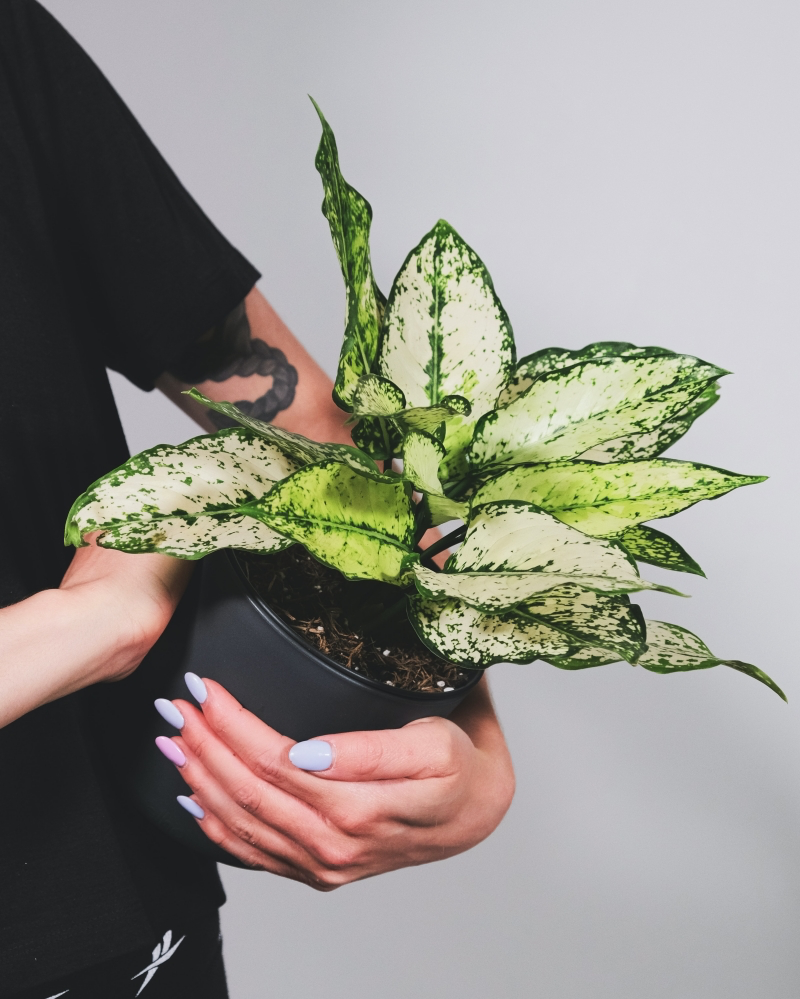
Want to feel the magic yourself? Let’s do it. Cook a single serving of spaghetti. While it’s boiling, gently heat 2-3 sliced garlic cloves in a skillet with a good glug of olive oil—don’t let the garlic brown! When the pasta is almost al dente, scoop out a mug of water. Drain the pasta, add it to the skillet with the garlic and oil. Now add a splash of that pasta water and toss, toss, toss! Watch it turn from an oily mess into a creamy, garlic-infused sauce that coats every strand. That’s it. You just did it.
Beyond Pasta: A Baker’s Secret Weapon
This is a less common but awesome use I picked up when working in a kitchen shared between a restaurant and a bakery. It turns out pasta water can add a fantastic quality to bread and pizza dough.
The starches add a subtle savory flavor and, more importantly, create an incredible crust. They caramelize during baking, giving you a crispier, deeper-colored crust than you’d get with plain water. It also seems to make the inside of the bread a bit softer.

But you can’t just swap it one-for-one. Here’s how to do it right:
- Cool It Down: The water MUST be lukewarm (around 100°F/38°C) before you use it, especially with yeast. Hot water will kill your yeast on contact.
- Adjust the Salt! This is the big one. Your pasta water is already salty. You have to drastically reduce or even eliminate the salt in your dough recipe. The first time my team tried this, we made a focaccia that was basically a salt lick. A lesson learned the hard way. Taste the water first, and as a rule, cut your recipe’s salt by at least half.
- Start Slow: The starches can make the dough feel stickier. Hold back about 10% of the liquid from the original recipe’s measurement and add it only if the dough feels dry.
Let’s Be Honest: A Look at Other Household Uses
The internet loves to suggest other uses. As a professional, I think it’s important to be real about what works and what’s just a myth.
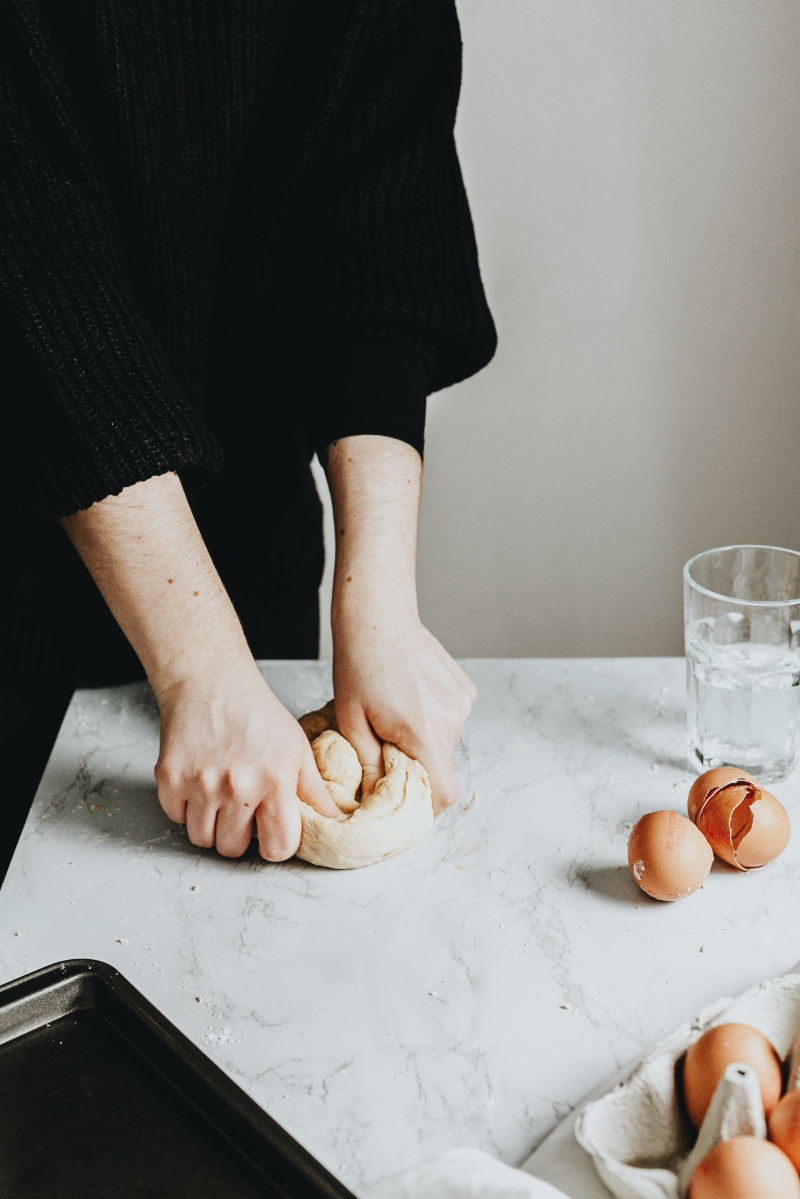
Washing Dishes? The idea is that the starch is a natural cleaner. In my experience, it’s a pre-soak, at best. It can help loosen cooked-on starches in the pasta pot itself, but it does nothing for grease. Pouring it in an oily pan just makes a starchy, greasy film. You still need soap and hot water for a proper clean.
Watering Plants? Please, please don’t do this. This is the most dangerous advice I see. Most houseplants are incredibly sensitive to salt. Salt buildup in the soil is toxic to roots and can kill your plants. The only time this is remotely okay is if you cooked your pasta in unsalted water, but the benefit is so minimal compared to the huge risk of forgetting and using salted water. It’s just not worth it.
Storing Your Liquid Gold
Pasta water is a food product, and it can go bad. If it’s been sitting out for more than a couple of hours, it’s a breeding ground for bacteria.
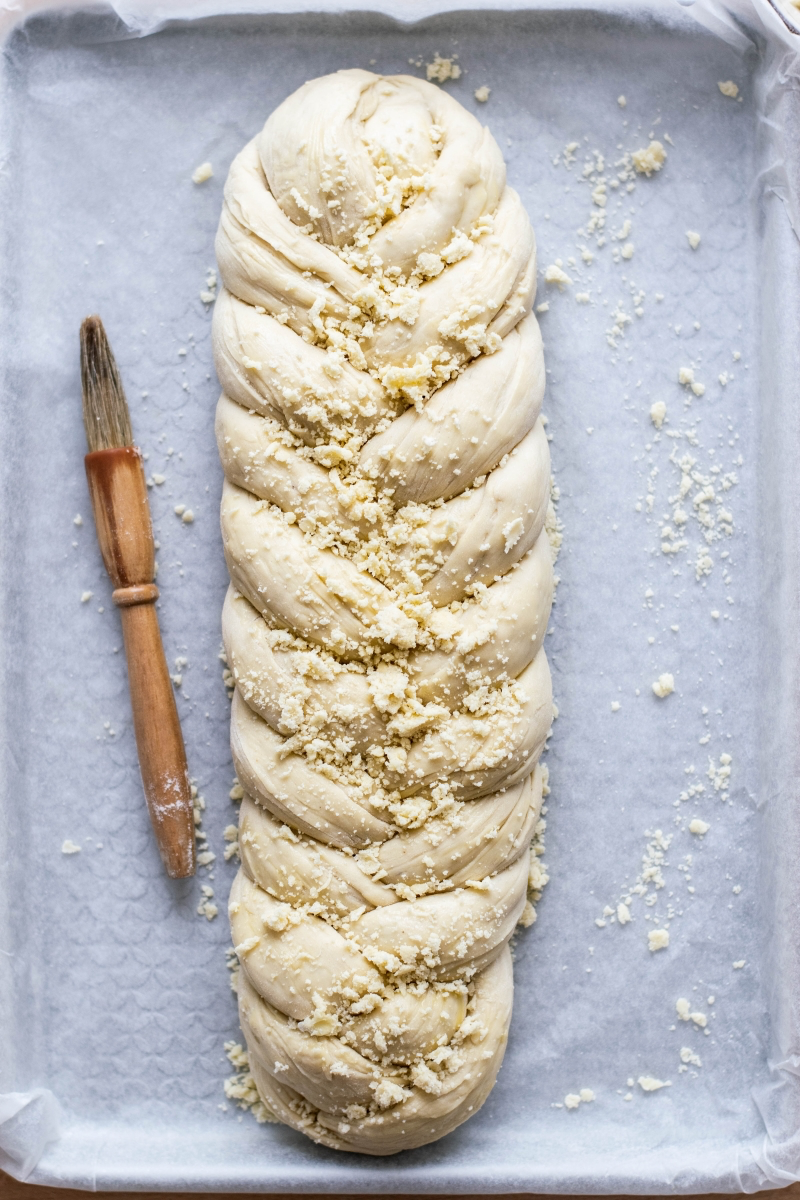
- In the Fridge: Cool it and store it in a sealed container (a mason jar works great) for up to 3 days. If it smells sour or off, toss it.
- In the Freezer: This is my favorite method. Pour the cooled water into ice cube trays. Once frozen, pop the cubes into a freezer bag. This is so convenient. For a single-serving pan sauce, just toss 2-3 frozen pasta water cubes into the pan as you stir. They’ll melt and emulsify perfectly.
So next time you make pasta, save a cup of that cloudy water. Start by mastering the sauce. Once you feel that transformation happen in the pan, you’ll never look at it as waste again. It becomes an ingredient, a sign that you’re thinking like a cook. And that’s a skill worth more than any recipe.
Inspiration:
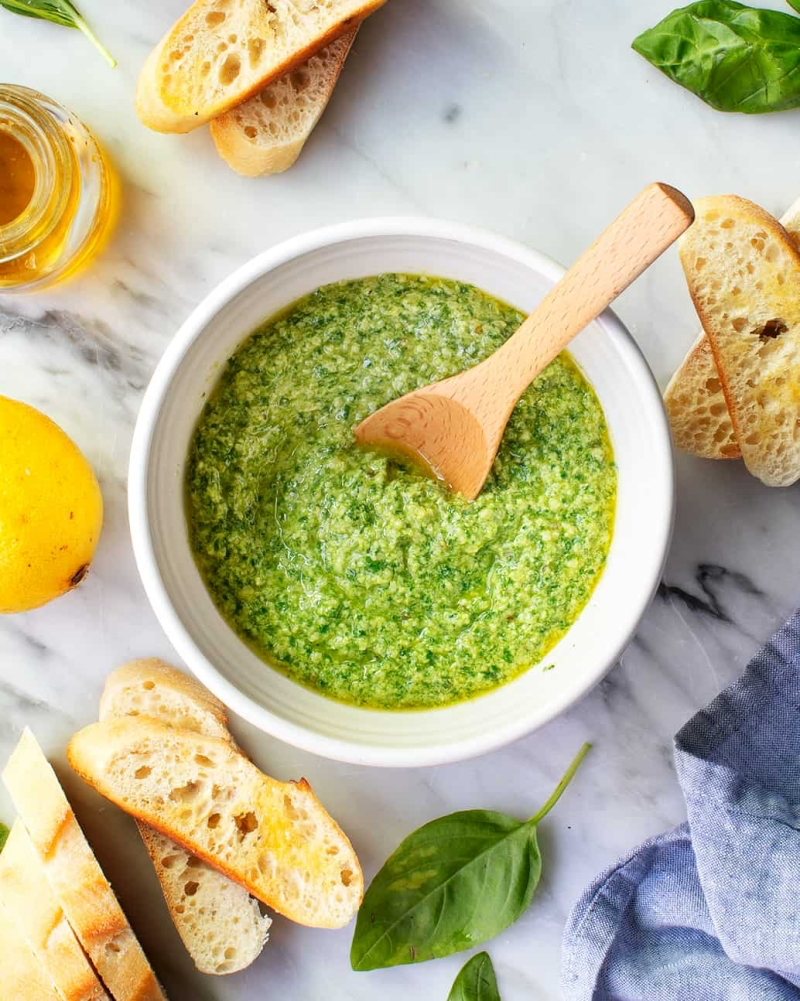

Can you use pasta water for anything besides sauce?
Absolutely! Think of it as a free, savory broth. Use it as the liquid base for making bread or pizza dough to add a subtle depth of flavor and a better crust. A splash can also enrich vegetable soups or stews, adding body without extra thickeners. And once it’s completely cooled and unsalted, your houseplants will appreciate the starchy nutrients—just be sure you didn’t salt the water if you plan to use it as fertilizer!
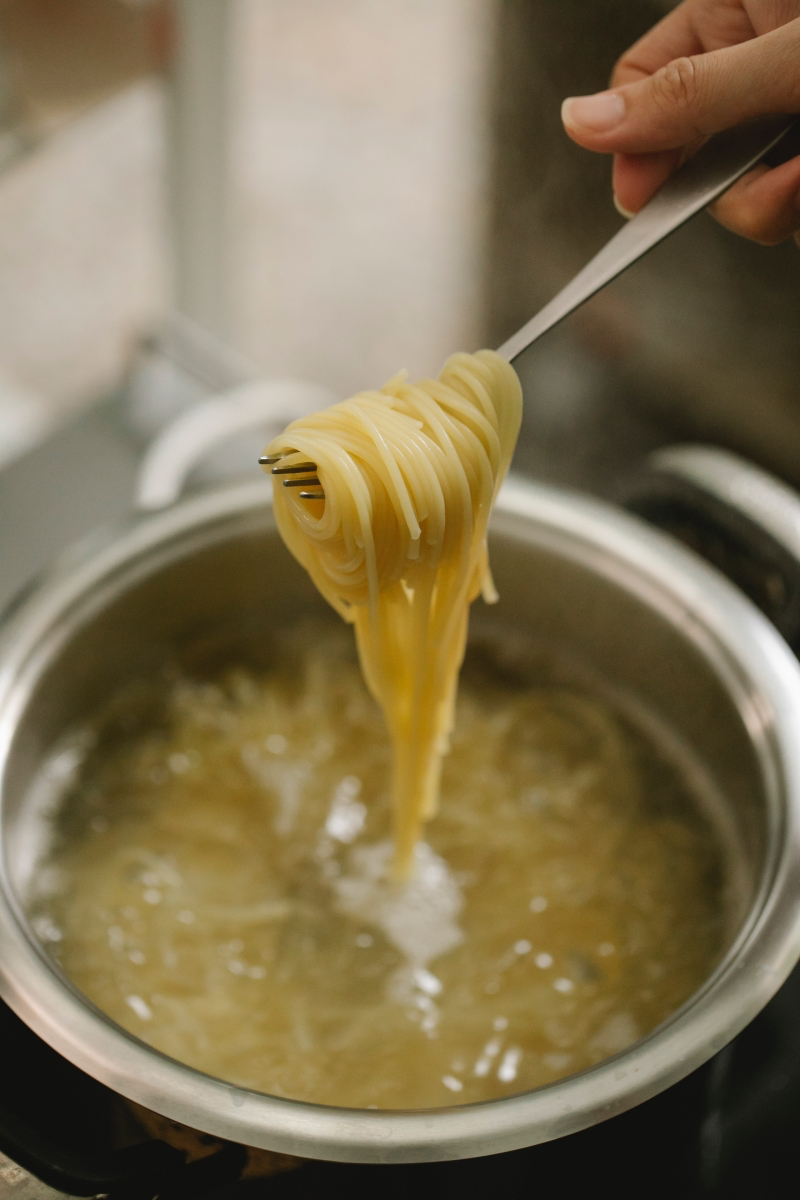
- A sauce that never quite clings to the pasta.
- A final dish that tastes bland and under-seasoned.
The culprit? Adding the pasta water too late. For a perfect emulsion, you must finish cooking the pasta directly in the sauce, adding the starchy water splash by splash while tossing vigorously over the heat. This process, called ‘mantecatura’ in Italian, is what binds everything together seamlessly.










